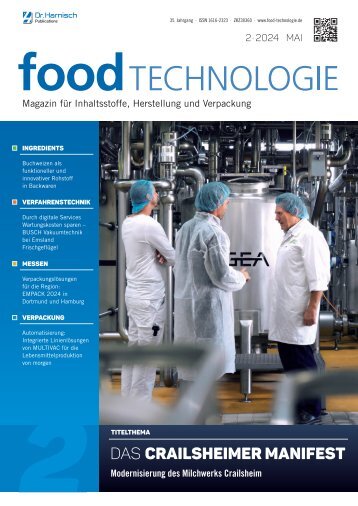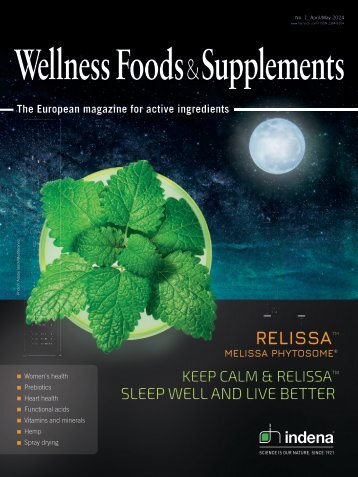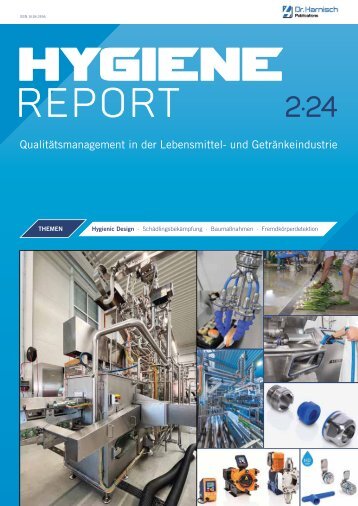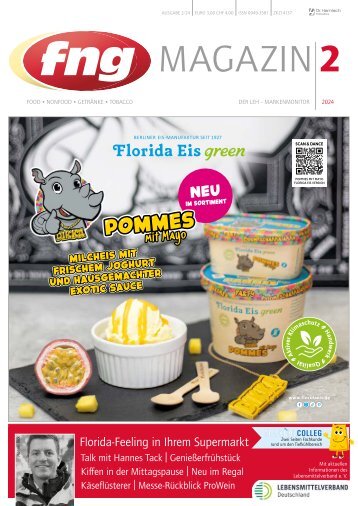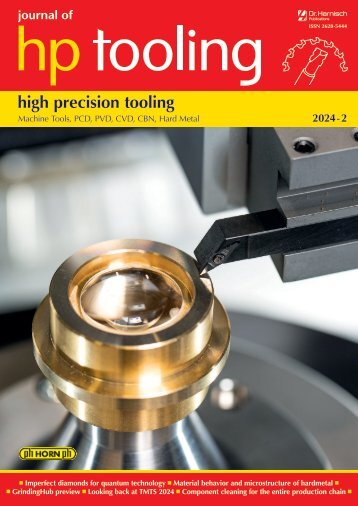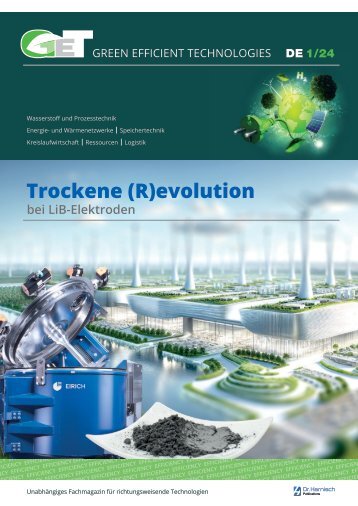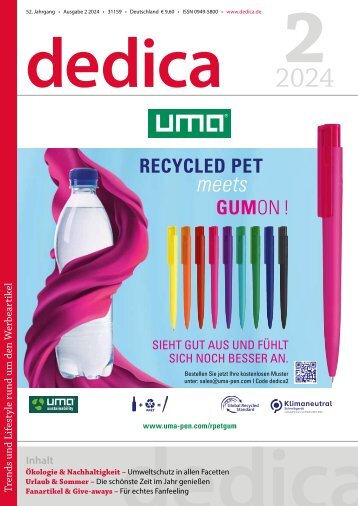GET – GREEN EFFICIENT TECHNOLOGIES EN 1/23
- Text
- Efficiency
- Hydrogen
- Pumps
- Technologies
- Efficient
- Solutions
- Materials
- Operating
- Sealing
- Applications
- Harnisch.com
Cover story Myth 1b
Cover story Myth 1b – Sealless pump drives are less efficient than mechanical sealed pump drives The veracity of this myth depends on the type of sealless pump. A magnetic pump utilizes the same standard motors as a mechanically sealed pump, so there is no difference. The electrical efficiency of canned motor pumps depends on the quality of the electrical motor and thus the manufacturer, as they are not using standard motors. To address the latter point first: With a carefully controlled liquid gap in the containment area the liquid drag can be eliminated for centrifugal pump purposes, and even in the high viscosities that are handled by positive displacement pumps, any liquid gap can be minimized by controlling and adjusting the liquid gap and the pump speed. The former point has not been true in 25 years, especially for magnetic coupled pumps. Non-metallic containment shells, ideally made from heavy-duty industrial ceramics, allow for a loss-free power transmission. With up-to-date magnetic drive technologies powers up to 1 MW can be transferred, depending on application and other situations, putting no longer any practical limit on the use of magnetic couplings both in terms of size or pumps or applications. Myth 2: Sealless pumps have more wear parts than mechanical sealed pumps Fig. 3: Adapting the liquid gap if necessary to reduce liquid drag Myth 1c – Whatever can be saved in utilities is wasted in the power transmission utilized by sealless pumps through the containment Typically, this claim refers to the transmission losses due to the metallic containment or in the case of more desperate arguments the liquid drag of the sealless pumps. Again, it depends on the design of the pump and customer specifications. But a close coupled magnetic coupled pump, which can be reliably used from very low to very high temperatures (-200…+400 °C), does not have more but fewer wear parts than a mechanical sealed pump. The close-coupled technology places the outer magnet carrier directly on the shaft of a standard electrical motor. In this design, there are fewer wear parts, because it operates without the need for a dynamic sealing element, without a shaft coupling, and an additional bearing carrier. This reduces maintenance requirements and costs considerably compared to mechanical sealed pumps. The journal bearings are typically maintenance-free if the pump is properly operated in clean liquids (or the bearings have been selected accordingly, more on that later). Fig. 4: Heavy duty containment shells made from industriall ceramics up to 63 bar Fig. 5: Maintenance friendly close-coupled magnetic coupled centrifugal pumps reducing the installation and maintenance costs 10 GREEN EFFICIENT TECHNOLOGIES 2023
Cover story Myth 3: Journal bearings of sealless pumps can’t handle low viscosities This used to be true for a long time. But with the reliable high-technology materials available today it is possible to handle even liquified gasses with viscosities below 0.1 cP without issues, even for the largest pumps. Solutions for high viscous liquids are in existence for decades, but also low viscosity operation is no longer any problem today, even without any utilities required for cooling and/ or flushing. Myth 4: Journal bearings of sealless pumps can’t handle solids very well Fig. 6: Pump handling liquid nitrogen on a test loop for new bearings The key here is more open and honest communication with the pump supplier. Modern materials allow for extremely solid loads without damage to the journal bearings. The highly wear-resistant industrial ceramic containment shells available today further improve wear resistance and do not wear even where the traditional dynamic shaft seals would come to their endurance limits. Additionally, magnetic filters can allow even the handling of liquids containing ferrous solids such as iron oxides if required. Myth 5: Sealless pumps are more sensitive to the wrong operation than mechanical sealed pumps Fig. 7: Totally worn out pump impeller after heavy sand load with undamaged ceramic containment shell The reality of this claim again depends on the type of pump and open, honest communication between the customer and the manufacturer. Today’s technology utilizing non-metallic containment shells allows for journal bearings that can handle operation outside the normal operating range very well, or even allow dry running for a surprisingly long time (Klaus Union verified dry run capability for more than one hour without adverse effects on bearing performance. And while we do not recommend such long-term dry running customers inadvertently verified our tests are sound by doing the same in a production environment). Fig. 8: Dry run capable magnetic coupled pumps have long been field proven GREEN EFFICIENT TECHNOLOGIES 2023 11
- Seite 1 und 2: GREEN EFFICIENT TECHNOLOGIES EN 1/2
- Seite 3 und 4: Editorial Harvest the sun Humanity
- Seite 5 und 6: HAMPRO® HIGH-PRESSURE PROCESS TECH
- Seite 7 und 8: Leading article sion. In fact, it i
- Seite 9: Cover story Efficiency Class IE2 IE
- Seite 13 und 14: Cover story Sealless pumps, both ce
- Seite 15 und 16: Energy carrier hydrogen Transport L
- Seite 17 und 18: Energy carrier hydrogen Material se
- Seite 19 und 20: Energy carrier hydrogen Material se
- Seite 21 und 22: Energy efficiency Heat recovery Fig
- Seite 23 und 24: Energy efficiency Heat recovery Fig
- Seite 25 und 26: From the research Heat pumps Fig. 2
- Seite 27 und 28: From the research Heat pumps Fig. 6
- Seite 29 und 30: Efficient manufacturing Special mec
- Seite 31 und 32: Decarbonisation Supply traffic Fig.
- Seite 33 und 34: Decarbonisation Supply traffic shou
- Seite 35 und 36: Decarbonisation Operating power max
- Seite 37 und 38: Decarbonisation Operating power pro
- Seite 39 und 40: Decarbonisation Production local su
- Seite 41 und 42: Decarbonisation Production fast swi
- Seite 43 und 44: Circular economy Production deep) o
- Seite 45 und 46: PROCESS TECHNOLOGY&COMPONENTS © Ae
- Seite 47 und 48: Companies - Innovations - Products
- Seite 49 und 50: Companies - Innovations - Products
- Seite 51 und 52: Brand name register Lutz Pumpen Gmb
- Seite 54: Dr. Harnisch Verlags GmbH Eschenstr
Unangemessen
Laden...
Magazin per E-Mail verschicken
Laden...
Einbetten
Laden...








































